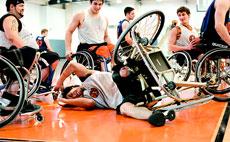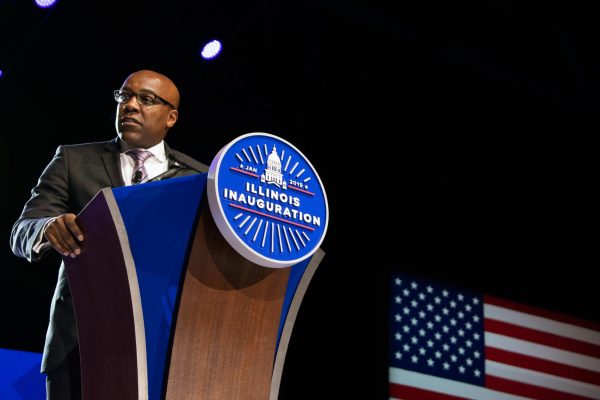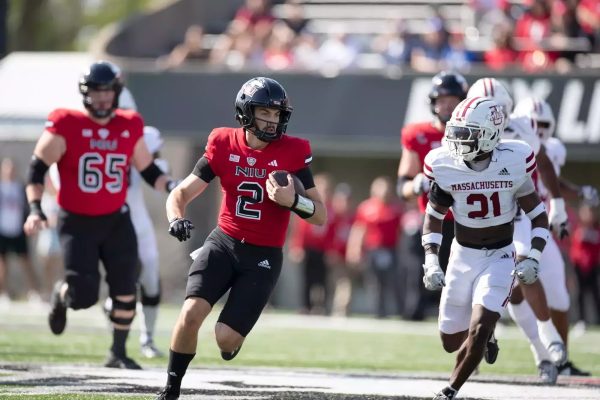‘A winning tradition’
April 25, 2006
They can set a pick, they can rebound, they can dribble, and they can even shoot threes better than Jamar Smith – well, at least one of them can. They are the University of Illinois Men’s Wheelchair Basketball Team. Five days a week, they get up for practice at 6:30 a.m. in CRCE, where they train rigorously alongside the women’s team. Coach Mike Frogley, known as Frog to the team, starts off every practice with a warm-up, stretching, and then the team circles up while he gives them some advice: “Whoever wants to reach a goal must take many small steps . everyday at practice, we take small steps.”
A series of exercises follows, and finally a scrimmage.
The team is made of a variety of players: Lars Spenger is from Sweden, Horie Wataru, a Parkland College student, is from Japan and Brandon Wagner is from Canada. The rest of the team comprises students from all over the United States.
What attracts wheelchair athletes to the University?
“I think they come to find out about the program because it is literally the best program in the world top to bottom,” Frogley said. “We produce more athletes that go on and play in international competition than all the other programs combined.”
Get The Daily Illini in your inbox!
Illinois is a big name in wheelchair basketball. The National Wheelchair Basketball Association was created by Dr. Tim Nugent in 1949 – their first member team was the University of Illinois Gizz Kids.
“We’re influential in every progression of wheelchair basketball,” said Denny Muha, team captain. “Every step of the way, U of I was right in the middle of everything and we’ve always had great coaches and a winning tradition.”
Illinois has been the most dominant team in men’s wheelchair basketball by far, winning 10 National Championships, more than any of the other eight college teams.
The game is essentially the same as able-bodied basketball. They play on a regulation court with 10-foot hoops. There are, however, a few rule differences: There is no double dribble – the player gets two pushes of the wheelchair before he has to dribble again, otherwise he gets a traveling violation.
“The big strategic difference is that because you can’t step sideways in wheelchair basketball because of your chair, because you don’t have lateral movement, position is everything,” Frogley said. “The smallest guy on the court can keep the biggest, fastest guy out of the court just by having good chair position . a pick and roll in wheelchair basketball is the most deadly way to score.”
And they play rough. It is common to see players fall and even flip or roll, only to get back up again without a flinch.
The players also have a variety of reasons for being there. Some had accidents that led to paralysis, some were born with defects such as Spina Bifida and others are just missing limbs. But they are not bitter, sad, or angry about their disabilities – they are completely satisfied with their lives.
For them, wheelchair basketball is more than a sport – it is a major part of who they are. While watching young children play able-bodied basketball during tournament downtime at the University of Missouri, freshman Steve Serio asked senior Paul Ward, “If you could give up everything – playing wheelchair basketball – to be able-bodied, would you do it?”
Paul thought for only a second before he said firmly and resolutely, “No, I would not.”







